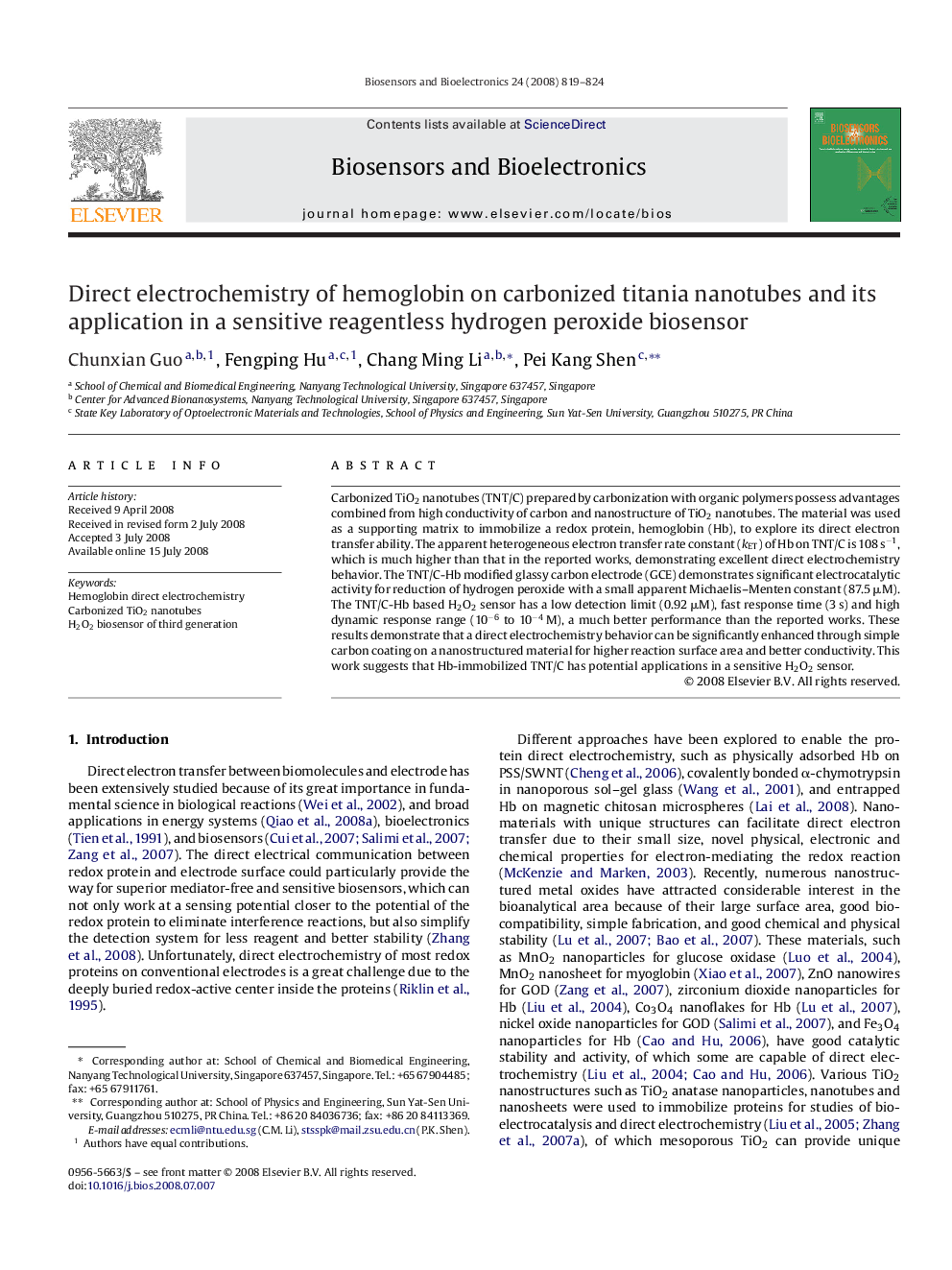| Article ID | Journal | Published Year | Pages | File Type |
|---|---|---|---|---|
| 869899 | Biosensors and Bioelectronics | 2008 | 6 Pages |
Carbonized TiO2 nanotubes (TNT/C) prepared by carbonization with organic polymers possess advantages combined from high conductivity of carbon and nanostructure of TiO2 nanotubes. The material was used as a supporting matrix to immobilize a redox protein, hemoglobin (Hb), to explore its direct electron transfer ability. The apparent heterogeneous electron transfer rate constant (kET) of Hb on TNT/C is 108 s−1, which is much higher than that in the reported works, demonstrating excellent direct electrochemistry behavior. The TNT/C-Hb modified glassy carbon electrode (GCE) demonstrates significant electrocatalytic activity for reduction of hydrogen peroxide with a small apparent Michaelis–Menten constant (87.5 μM). The TNT/C-Hb based H2O2 sensor has a low detection limit (0.92 μM), fast response time (3 s) and high dynamic response range (10−6 to 10−4 M), a much better performance than the reported works. These results demonstrate that a direct electrochemistry behavior can be significantly enhanced through simple carbon coating on a nanostructured material for higher reaction surface area and better conductivity. This work suggests that Hb-immobilized TNT/C has potential applications in a sensitive H2O2 sensor.
